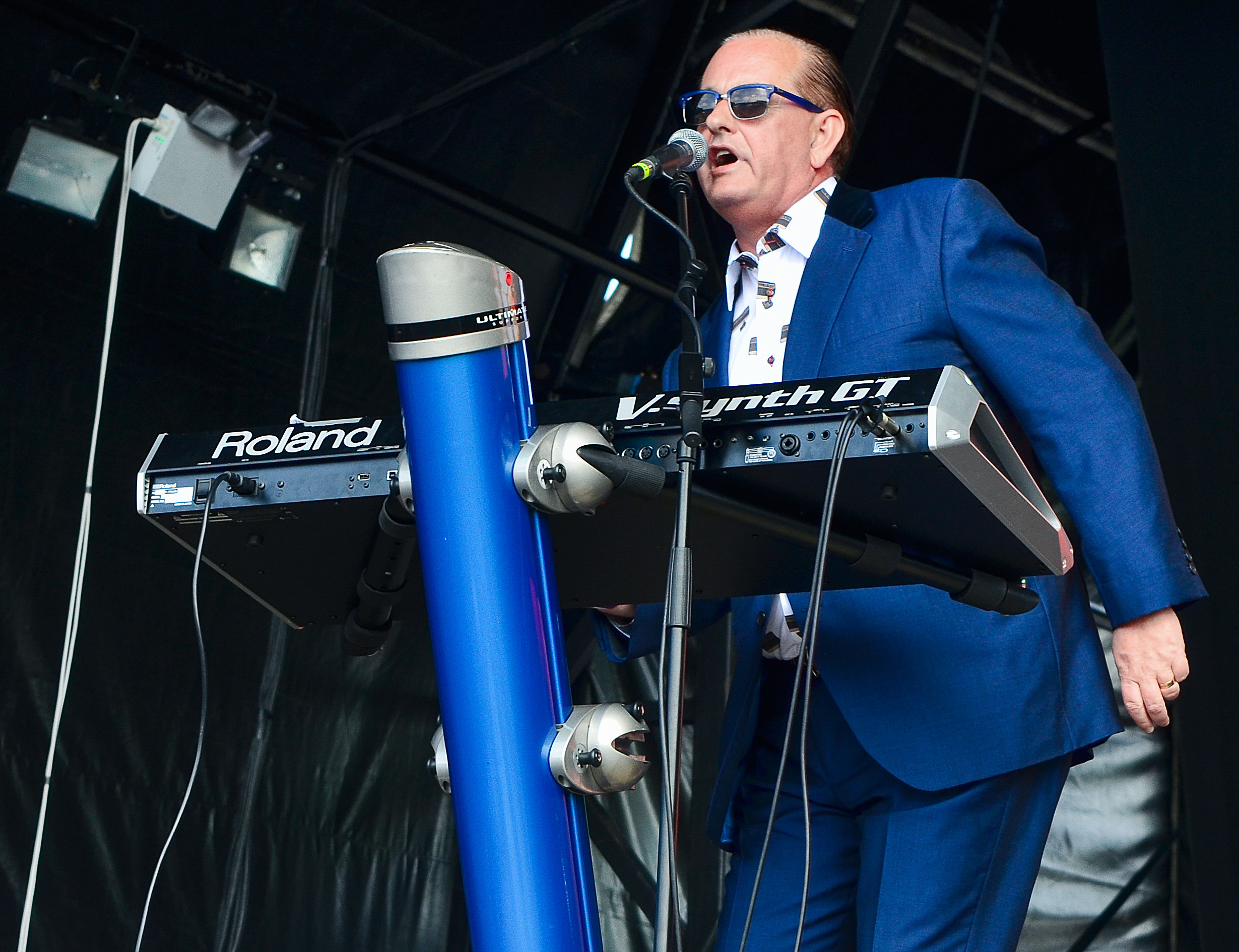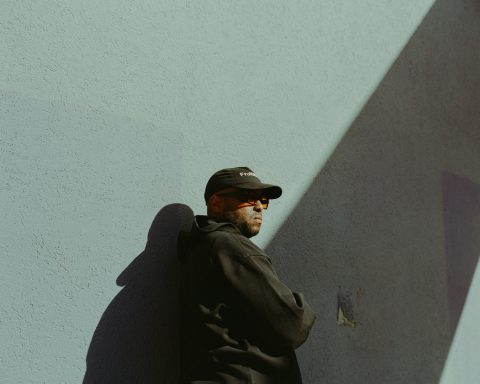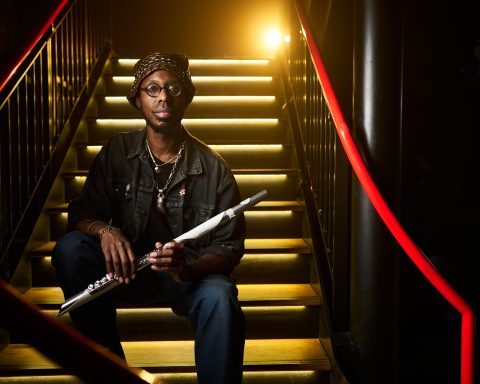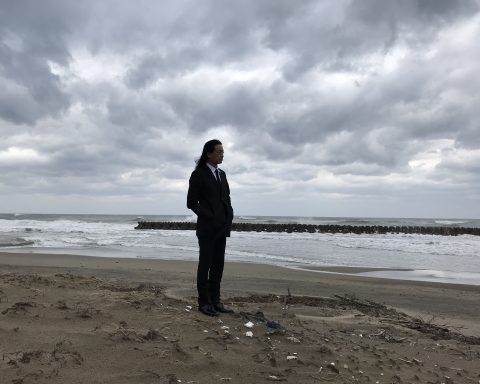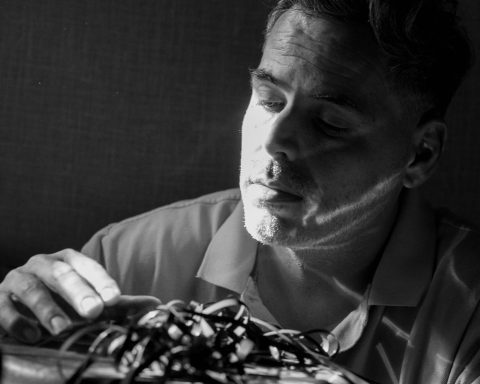There’s little doubt that pioneering English composer and producer Martyn Ware has influenced the direction of electronic music. As a founding member of The Human League and Heaven 17, he co-wrote genre-defining tracks such as “Being Boiled” and “Temptation.” In addition, his production credits span iconic names, including Tina Turner, Erasure, and Terence Trent D’Arby. Having travailed the highs and lows of synth-pop stardom (and singed his fingers on more than one occasion), Ware’s fascination with sound goes beyond electronic pop. A leading innovator in 3D and immersive audio, his recent collaborative LP, It’s Always Ourselves We Find in the Sea, showcases his current commitment to environmental themes within an ambient context.
I Dream of Wires
You worked in the computer industry when you left school. What field did you work in?
I was a computer operator working night shifts on a big ICL 2600 mainframe computer, which was huge but had the power of a smartwatch. The memory was literally grids of wires with magnets; this was before computer chips, when printers were the size of two giant fridges and portable disc drives weighed a ton but held 320MB. I was mainly doing tedious payroll and remittance advice runs, but it paid reasonably well. I went on to use an IBM 3600 Series, which was more sophisticated but the size of half a football pitch.
Were you intrigued by music technology at the time?
I was interested in music technology but couldn’t afford it. Ironically, Ian Marsh from The Human League did the same job, and we started messing about in bands without any real kit. I had a double Stylophone, which was as close as I got to being Brian Eno, but 1976/77 coincided with the explosion of entry-level synthesizers, which, even for three young guys like us, were within range if we paid on HP.
A decade later, I discovered how Ian had gotten more expensive stuff than me. Basically, his dad had won the pools. It was only a six-figure sum, but that was an awful lot of money back then for a builder from Sheffield.
What gear did you club together and buy?
The Roland SYSTEM-100, which became our main workhorse. At roughly the same time, I bought a 700S, which was monophonic. That was the only kit we had when we made “Being Boiled,” and a two-track Sony tape machine with sound-on-sound capability. We didn’t even have a mixer; we bounced from track to track and added stuff as we went along.
"We took Queen as a provocation and had a manifesto pinned to our studio wall that said 'Only Synthesizers.'"
In Search of Soundscapes
Having coalesced all of your influences, was the concept for The Human League based on technology, futurism, or something more personal?
Before The Human League, Ian, Adi Newton, and I formed a band called The Future. It was abstract, but we were listening to out-there stuff like krautrock. Faust came on at the City Hall with a block of concrete and a pneumatic drill while the drummer played pinball with his back to the audience.
We wanted to create soundscapes for our imagination and make something vaguely resembling a song. Obviously, we had no idea what we were doing, so we took these demos down to London, and the general response was terrible. That was disheartening, but two record companies showed an interest and had a nurturing attitude: Virgin Records and Island.
The Hit That Wasn’t
You left The Human League before the band struck gold with Dare. Was that because you were less interested in taking a commercial route?
No, it’s not true. Our manager, Bob Last, was probably trying to protect us from stuff, but his mentor was Malcolm McLaren, a notorious, iconoclastic maverick who regarded bands as chess pieces. So it didn’t surprise me when I discovered the record company was concerned that we weren’t selling as much as they’d hoped. Virgin was trying to nudge us toward commerciality, and we had no problem with that, but we weren’t going to compromise on the electronic thing.
We put out the Holiday ’80 EP, which had a track called “Marianne” that we thought would be a stone-cold hit, but it never got released. We felt we were developing our craft as commercial songwriters. Still, those behind the scenes were starting to lose patience, and that’s when Bob and the record company got the idea that Phil Oakey could be a mainstream pop star, and Ian and I were somehow hobbling his chances of doing it.
"We put out the Holiday '80 EP, which had a track called 'Marianne' that we thought would be a stone-cold hit, but it never got released."
Did you feel betrayed?
It came as a big shock. Adrian Wright was our visual guy, and we were happy with the concept of him being a full member of the band. Then Phil came into rehearsals one day and stated that he wanted Adrian to have a quarter of everything. I thought, “Hold on a second, he didn’t write anything, and you want him to have a quarter of our publishing?” Phil was very dogmatic, so we said, “No.” And looking back, that was the beginning of the end. Thankfully, we came to an agreement that Ian and I would have 1% each on the next album, which turned out to be Dare.
A Radical Departure
Did leaving The Human League act as a motivation to make it just as big elsewhere?
I was mortally wounded because Phil was my best friend from school, and I’d brought him into the band, but I became extremely motivated to do something better and shinier with fewer restrictions. That’s why we formed B.E.F. as a potential for having more than just Heaven 17.
We put the first album out as a menu for potential clients and, at the same time, released Penthouse and Pavement, which we viewed as a radical departure. I’m still very proud of it, even though Virgin struggled to break us. It was in the top 40 for 75 weeks and did well in the end, so they gave us a blank check to make Luxury Gap.
"I was mortally wounded because Phil Oakey was my best friend from school, but I became extremely motivated to do something better."
Why do you think great early Heaven 17 singles, “(We Don’t Need This) Fascist Groove Thang,” and “Play to Win” struggled to break the top 40?
“Fascist Groove Thang” was banned on Radio One because of its political content. And as we all know, if you’re banned on Radio One, you won’t get on Top of the Pops either. Everybody at Virgin was convinced it was going to be top-10. But, as always, it depended on getting on the playlist. In those days, singles tended not to go blammo the first week. There would be a ramp-up and a more rapid ramp-down, but none of that harmed us because they believed in us, for which I’m very grateful.
"The 303 was a major part of 'Let Me Go,' which could have been the first time it was used on a commercial hit single."
The Thrill of the 303
Is it true that you were one of the first producers to use the Roland TB-303 and TR-606 on a commercial electronic pop track?
Basically, we used the 303 to make tracks within a month of it coming out. We might have used the 606 on a couple of 12-inch records, but not Luxury Gap. The 303 was a major part of “Let Me Go,” which could have been the first time it was used on a commercial hit single—not in the UK but in America and many other territories.
Was it a case of having a new piece of technology and thinking, “Let’s use it before everybody else does”?
There was some of that. I used to program the Linn Drum, so I had that mindset of linking patterns and creating song structures, whereas Ian was more adept at designing sounds on the SYSTEM-100. The really exciting thing, and something that very few other synthesizers can do to this day, was the idea of a drum machine slurring between notes. That was completely innovative because the 303 was redolent of real bass playing. We thought that was fantastic because it was an earworm all on its own.
Perfect Timing
Were you also using a Roland MC-4 for sequencing?
It was a main tool in our compositional regime. MIDI was still quite young, as was the idea that you could use the MC-4 to issue CV and gate. To this day, I still think it’s the best sequencer we’ve ever used timing-wise—much better than any software sequencer.
When I was working with Vince Clark, he had a twin-feed oscilloscope and did a timing test on the kick drum, and the MC was absolutely rock solid to less than a millisecond. We also had Logic running on a Mac, and it was all over the place—drifting by eight or nine milliseconds. Why does Kraftwerk sound so funky? Because they were using hardware sequencers, and everything was absolutely bang on timing-wise.
When the Heaven 17 single “Temptation” got to number two, that must have been satisfying.
We were convinced, but Virgin didn’t want to put it out as a single. Simon Draper was umming and ahhing, and we begged him to put it out. He said, “I tell you what we’re gonna do. We’re gonna send it to David Kershenbaum to mix it,” because he’d worked with Joe Jackson. Anyway, it came back after a week and was a right mess. It was awful. I literally got down on my knees and said, “Just trust us on this one.”
It reached number two, but how close was it to number one?
It was number one at mid-week, and we were 20% ahead on sales. But by Sunday, it was number two and beaten out of the blue by New Edition’s “Candy Girl.” We were gutted, of course, because that was our place in history. But amazingly, sales kept increasing, and when mid-week came along, we were number one again. Then, out of the blue, we were beaten by Spandau Ballet’s “True.”
"We can render anything we do in binaural, and if you wear headphones, you'll get a 3D effect."
3D Audioscape and Ambisonic Sound
When did you start to become interested in surround sound technology?
An opportunity came along when the National Centre for Popular Music in Sheffield was being built. It was a millennium project, and I won’t go too far into this because it was a terrible museum. Still, they wanted to build a sound auditorium, so a company called Nick Gillieron Acoustic Design and I were co-commissioned to find the best system to use.
We visited different universities and heard an Ambisonic system at the University of York that was amazing, but there wasn’t a commercial application for it. The only way we could use it as a creative entity was to design a user interface that anybody could understand, was easy to use, and could be integrated into Logic. It’s called 3D Audioscape, and to this day, it’s the best-sounding immersive sound system I’ve ever heard—better than Dolby. It sits in the chain between the multi-track, you spatialize it with 3D Audioscape, and it outputs the sound to the different speakers.
Your recent LP, It’s Always Ourselves We Find in the Sea, with Charles Stooke and Gabriel Ware, is based on Ambisonic 3D sound technology. How does it translate in a stereo environment?
We started using the system in the early 2000s, and Mute released a couple of records on which we could render it in binaural for headphones. Now, I don’t care where you are on earth, but it won’t sound as good on headphones as it does in the open air, so it’s not perfect. However, we can render anything we do in binaural, and if you wear headphones, you’ll get a 3D effect.
Can we expect new material from Heaven 17?
We’re discussing it, but it takes time to do stuff to the level we want. Glenn does TV soundtrack work, which is his main bread and butter, and we’ve done a lot of touring, but all we can do is annihilate our legacy, and I’m not going to do that. In 1983, we spent £300,000 recording Luxury Gap, which is £2 million now. Although I don’t expect to get that, even relatively small budgets seem out of reach for many record companies these days.
